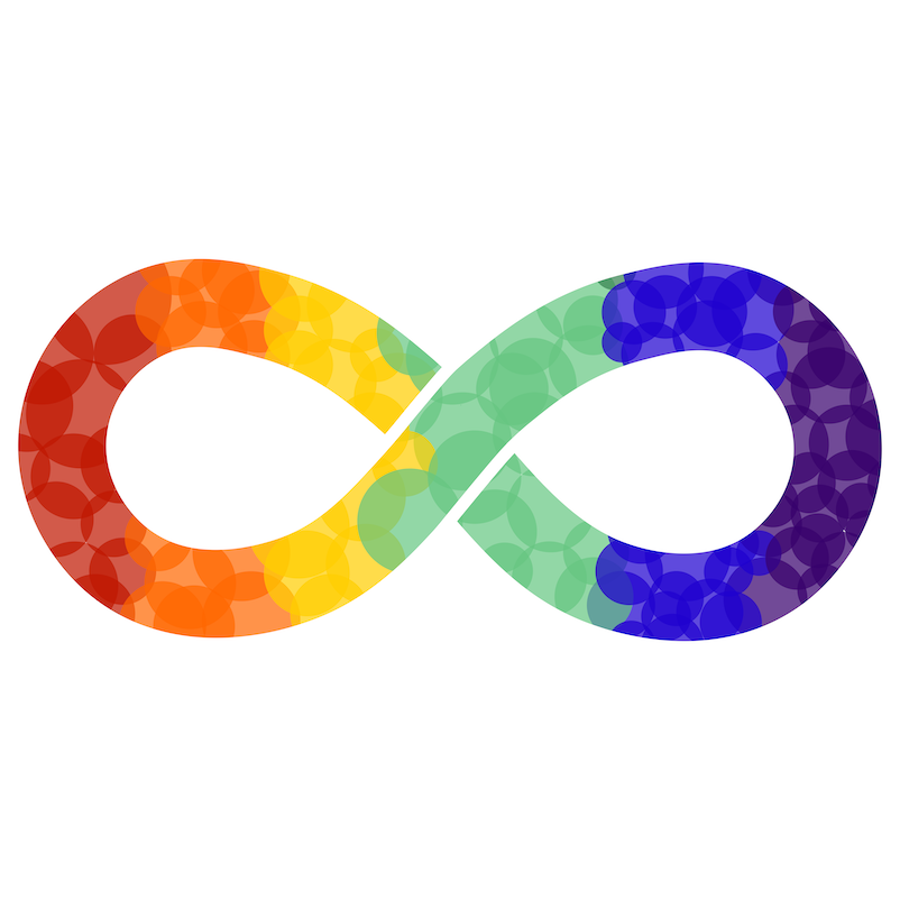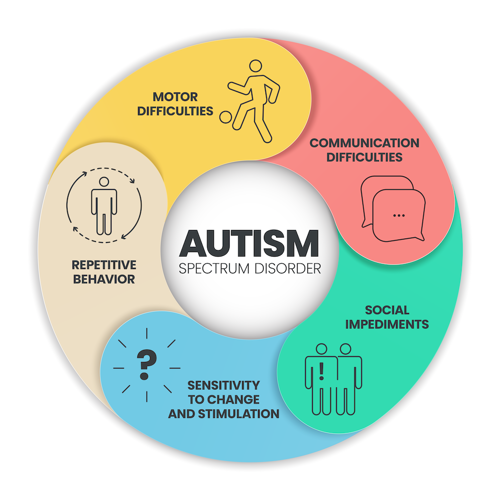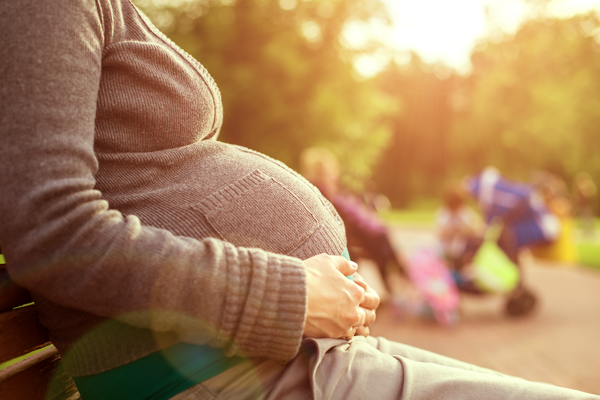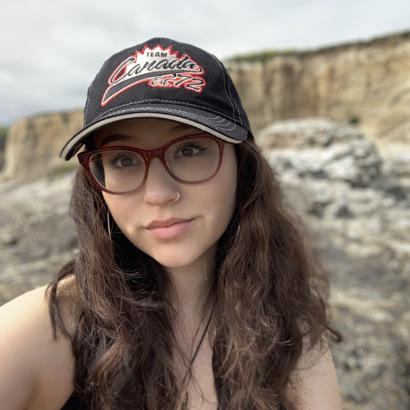
Is autism genetic?
April 19, 2024

- Related Topics:
- Autism,
- Neurodiversity,
- Complex traits
A curious adult from New Brunswick asks:
"Is autism genetic? I have an older brother who was diagnosed when he was 3 years old and I'm wondering what the likelihood of me having children who also have autism would be."
Although many genes have been linked to autism it’s still hard to predict inheritance in a given family. If one family member has autism spectrum disorder (ASD), it is not guaranteed that their family members will too.
ASD is a complex condition that is most likely caused by a mix of genetic and environmental factors. Unfortunately, most studies of ASD have only looked at either a person’s genes OR their environmental factors, not both.
Here I’ll go over what we know about these factors and some of their limitations.
What is autism?
Autism is a condition that affects a person’s social and communication skills. It’s more common in males and can be diagnosed in children as young as 2-4 years old. The CDC estimates that around 1 in 36 children have autism.1
The name “autism spectrum disorder” (ASD) refers to the wide spectrum of ways in which the condition can present.
Some autistic people have a harder time with verbal and non-verbal communication. For example, they might have trouble picking up on social cues like differences in tone of voice. Other common characteristics can include difficulty with eye contact, repetitive behavior, and hypersensitivity to a changing environment.
On the other hand, some autistic people may not have any difficulty socializing. Others may develop an intense interest in particular topics. Some become experts in these topics and enjoy sharing their knowledge with others. In essence, autistic people display a diverse set of social and communication skills.

Family studies of ASD
Scientists often study families to better understand whether a condition can be inherited. This can also help determine “how genetic” a trait is, and how likely a parent is to pass that trait on to their children.
Recurrence risk is often used as a measure of how likely it is a relative will have the same trait. One study found that you are more likely to have autism depending on how closely related you are to someone with autism.2
For example, for full siblings who share 50% of their DNA, the recurrence risk for ASD is about 13%. Whereas someone who does not have a full sibling with ASD is only 1.2% likely to develop ASD.2
Identical twins, who share 100% of their DNA, the recurrence risk for ASD is estimated at 59%.2 Exact estimates can vary and some studies have reported anywhere from 60 to 90% recurrence risk for identical twins.3-4 But if autism were purely genetic, we would always expect identical twins to develop autism.
These studies help demonstrate that genes don’t tell the full story. A person with autism in their family is at a slightly higher risk of developing ASD, but it isn’t at all a guarantee.
So far, scientists have found that at least 10 different genes and their interactions may be linked to ASD. Many affect brain development, specifically the part of the brain that controls speech. Scientists currently believe that none of these individual genes has a large effect on its own. Instead, it’s the combination of all of these genes together, plus non-genetic factors.5
Environmental Factors Impacting ASD
Just like there isn’t a single gene that causes autism, there isn’t a single environmental factor that causes it. However, some environmental factors have been correlated with autism.
For example, some studies suggest that air pollution can increase the chances of autism. One study found that pregnant women who lived closer to freeways, and therefore traffic-related pollution, were twice as likely to have children with ASD.6
Other factors might decrease the chances of autism. One study found that women who took prenatal vitamins early in their pregnancy were less likely to have children with autism.7 Another study found that younger parents (21-35 years old) are slightly less likely to have children with autism.8
It’s also important to keep in mind that a person’s economic background can affect their health. For example, lower-income housing areas are more likely to have freeways running through them. And people with higher incomes might have more access to prenatal vitamins and medical care. These are just some of the reasons that might explain why low socioeconomic status is also sometimes associated with a higher rate of autism.9-10

An evolving understanding of the autistic community
As previously mentioned, the CDC currently estimates around 1 in 36 children have autism. But back in the year 2000, they estimated only 1 in 150 children had autism!1 So what has caused this increase?
Overall, it’s mostly due to changes in how we detect and diagnose autism.
In 2001 a guide was put into practice to help set a standard across the nation.11 This made it easier to identify people with ASD. Before then people were often diagnosed with a range of different conditions that we would today consider part of the autism spectrum.
These changes in diagnosis methods and language can make it hard to compare rates of ASD over time. It can also make it harder to interpret older scientific studies.
And even though we don’t have complete answers about the biology of autism, figuring that out isn’t necessarily a priority for everyone. For example, a study from earlier this year surveyed autistic communities in Scotland and found that most folks were less interested in genetics, treatments, and causes. Instead, they wanted research to focus on mental health and educating the general public to help decrease the stigma.12
Neurodivergence is a general term that describes people whose brains develop or work differently. This includes people with autism, ADHD, dyslexia, Tourette’s syndrome, and more. Research shows that people who know they are neurodivergent can use that knowledge to adapt and thrive.13
In general, there’s a growing push to embrace and celebrate people’s differences.
Raising awareness about autism could lead to greater inclusivity and foster a community of understanding and acceptance of neurodiversity!

Greta Thunberg is a climate justice activist who openly identifies as autistic. She describes how her condition has only helped her be a stronger advocate who is daring enough to ask difficult questions!
Read More:
- Cleveland Clinic: What does it mean to be neurodivergent? (2022)
- Is ADHD genetic? (2023)
- What are my chances of having a child with autism? (2005)

Author: Andrea Ramirez
When this article was published in 2024, Andrea was a Ph.D. candidate in the Department of Biology, studying the diversity of root anatomy across the Brassicaceae family in José Dinneny’s laboratory. She wrote this answer while participating in the Stanford at The Tech program.
 Skip Navigation
Skip Navigation
